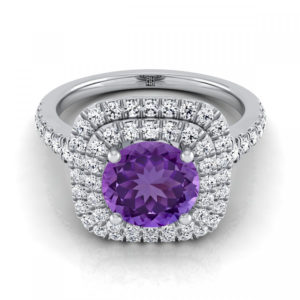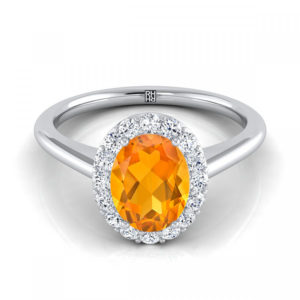
How an Amethyst Becomes Citrine
 Amethyst is the birthstone for February, which is why many people buy amethyst rings with diamonds as a birthday gift too.
Amethyst is the birthstone for February, which is why many people buy amethyst rings with diamonds as a birthday gift too.
Though it naturally occurs, citrine can also be made by heating an amethyst with the right iron content under controlled conditions. Long ago, it was discovered that by heat-treating a light-colored amethyst or smoky quartz, a percentage would turn into a gorgeous golden yellow color gemstone.
In fact, the only distinction between both the gems is the oxidation state of iron impurities in the quartz. When heated, they are reduced in order to make the purple color of amethyst to fade and become yellow to reddish-orange. Still, this process depends upon various factors comprising the percent of the said impurities and the healing time and duration.
Much of the citrine coming from Brazil are subjected to heat treatment. Some  unusual citrine stones, such as the golden orange or dark sherry colored ones, are highly prized. At the same time, amethyst gemstone loses its color upon subsequent heating and becomes white or grey, which makes it less valuable.
unusual citrine stones, such as the golden orange or dark sherry colored ones, are highly prized. At the same time, amethyst gemstone loses its color upon subsequent heating and becomes white or grey, which makes it less valuable.
